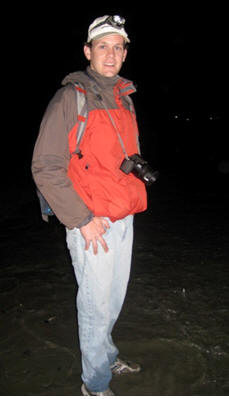

Andy Fredell documents a fantastic grunion run!


Estimating population connectivity of the California Grunion, Leuresthes tenuis, using natural larval tags
My master’s research is focused on the population dynamics of the California Grunion, Leuresthes tenuis. The California Grunion is one of only a few fish species that spawns and lays its eggs in terrestrial environments. Twice a month during the full and new moon grunion ride the waves onto the sandy beaches to do their spawning dance. This event has cultural significance to many southern Californians who bring their families to the beach at night to watch the silvery swarm of grunion, have a barbeque, and maybe catch some to eat. Little is known about where the grunion go once they hatch and if they show fidelity to their natal beach once they are mature enough to spawn at about a year old. Because grunion use beaches as critical spawning habitat, understanding if they use the same beaches year after year is important for making management decisions.
The objective of my research is to understand larval exchange between populations of the California Grunion using otolith elemental tags. In addition, I will examine the level of natal site fidelity at multiple beaches/regions in the southern California Bight. We have completed analysis of otolith elemental signatures from grunion embryos collected in the spring and summer of 2008 and have found very good regional classification for these elemental tags. In the coming spawning season we will be collecting embryos from beaches in Baja California in addition to beaches located in the southern California Bight to examine otolith elemental signatures from their entire range. Young-of- year grunion will also be collected from a subset of the previous year’s collection sites to analyze the embryonic core of the otolith and identify birth location.




